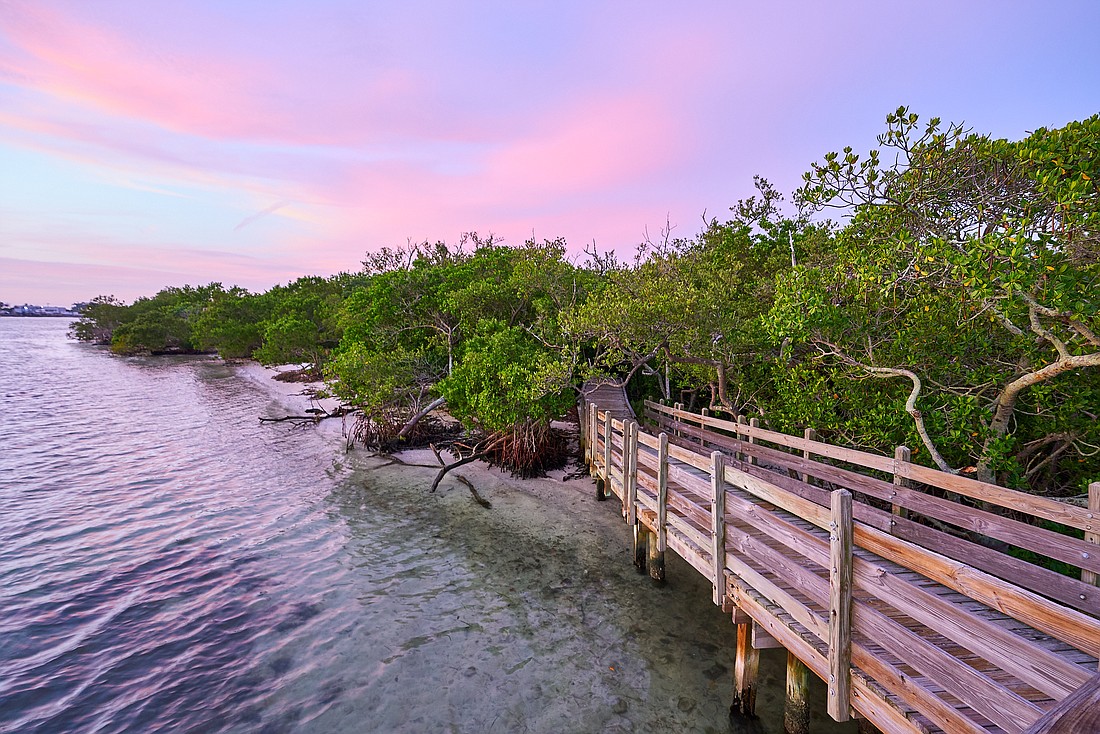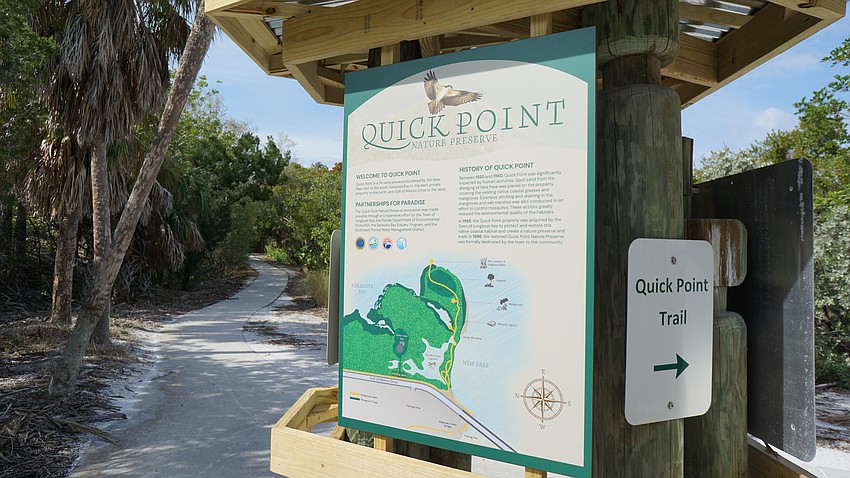- April 30, 2024
-
-
Loading

Loading

One of Longboat Key’s final frontiers of undeveloped land, Quick Point Nature Preserve, is a hidden gem — and in need of a site refresh.
The Sarasota Bay Estuary Program recently began the site refresh in the Longboat Key preserve, which is part of a larger goal of enhancing three parks across Manatee and Sarasota counties: Quick Point, Sarasota Bay Walk on City Island and Leffis Key Preserve.
Quick Point is a 34-acre restoration site located on the southern tip of Longboat Key, easily accessible by residents of the Key and Sarasota.
“Longboat Key is so heavily developed,” SBEP Operations Manager Heather Moody said. “To actually be able to get out in nature and enjoy an unobstructed view of the Bay like that is definitely unique.”
Moody has been with the organization for a little over two years. When the three refresh projects were brought up, Moody said it was the perfect fit for her background in environmental education and park management.
The Charles & Margery Barancik Foundation was the primary donors for Quick Point’s site refresh, granting $25,000 for the project. The SBEP contributed $23,000 from their funds as well.
The first step of the project has already been completed: new signage.

Moody said much of the old signage was from when the preserve was officially established in 1996. Brown letters with a plain tan background, the signs were outdated in style and information.
“It was well time to replace the signage and update it, and talk about some more relevant topics to current day like development and sea level rise,” Moody said.
The new signs include colorful maps, visual wildlife identification facts and, like Moody said, more updated information on environmental threats and how to protect the bay.
Next, the site is due for repairs to the wooden boardwalks and a thorough removal of invasive species.
Maintaining an open, wooden boardwalk is a struggle in saltwater environments, Moody said, especially when mixed with the impacts of storms.
For now, the available funds won’t cover a replacement of the whole boardwalk.
“We’re going to put the money to its best effect, by addressing the worst areas first as we continue to look for additional funding to address other areas,” Moody said. “We and the town area are always looking for other opportunities to have more funds to complete the process.”
The last piece of the site restoration project is a removal of invasive species, like Australian pines and Brazilian peppers.
Removing plants like those requires more effort than just a one-time sweep.
“That becomes a continuous battle because new seeds are always being carried in by birds, by wind,” Moody said. ‘These non-native plants are very aggressive, they’re survivors. That’s how they are so successful and they spread so well.”
To address the removal, Moody said the effort will be a combination of a third-party contractor and volunteers.
There may be some larger trees, bushes and stumps that would need to be handled professionally.
But for smaller plants, Moody said that would be the focus of volunteer work days, where people would receive a quick training on how to identify the invasive species and then work together to clear them out.
The plan is to have everything done by summer, Moody said. Quotes for the boardwalk restoration are just coming in, since the grant from the Barancik Foundation was just approved at the start of February.
Invasive plant removal is something that the SBEP would want to coordinate before the temperature gets too hot in the summer. If that’s not possible, then that component could be pushed back until the fall.
All three of the refresh projects align with SBEP’s overarching mission of protecting the Bay and its watershed.
“A lot of that work actually begins on land,” Moody said.
That includes keeping water quality and ecosystem health at the top of mind. By focusing on land and what is being put into the watershed, those trickle-down effects can be positively influenced by having a cleaner impact on land.

The restoration projects also provide habitat, something that is becoming increasingly limited with more development, Moody said.
In Quick Point, mangroves provide nursery grounds for breeding fish and native trees host nesting grounds for birds.
Aside from providing natural beauty, restoration sites like Quick Point also serve as protection.
“By providing a more natural buffer between our developed areas and the Bay itself, we are helping to intercept some of that potential pollution,” Moody added.